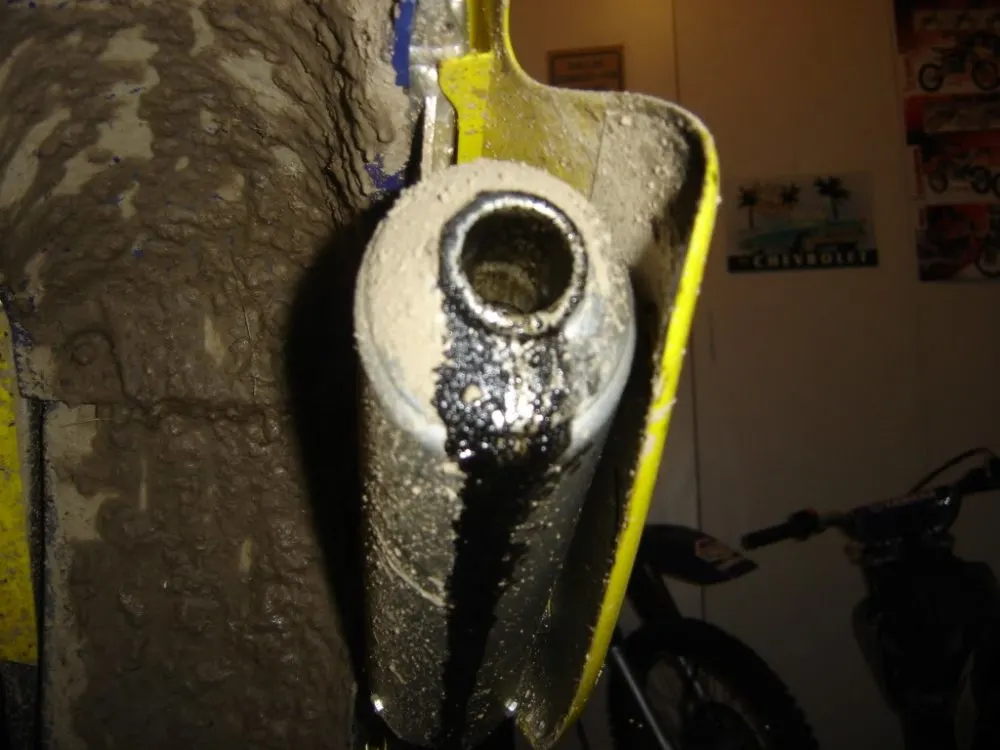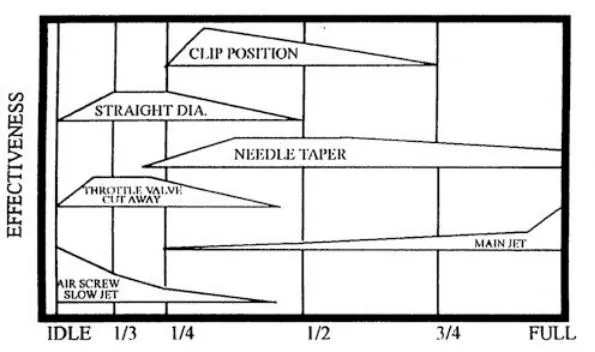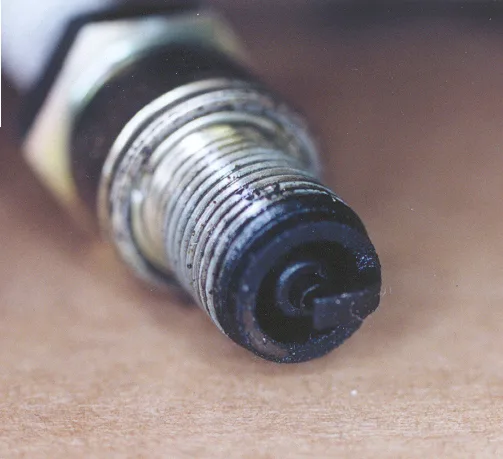What is jetting and why should I learn about it? Even if you know how important it is, maybe you've neglected it because it's intimidating...
Pulling apart a carburetor and changing these tiny jets to change how the bike runs, but where do you start?
Changing the jets is actually not that hard, especially on a 2 stroke dirt bike carb. The harder part is the tuning, but that's why you're here. This is the ultimate guide to simplify and understand how jetting works.
Don't have a 2 stroke dirt bike? Click here for 4 stroke jetting made easy.
Why Is Jetting Important?
A correctly jetted carburetor makes a tremendous difference in the torque, mid-range pull, top-end pull, and over-rev of your engine.
If you have never jetted your bike correctly, you will almost certainly gain some performance at some point in the bike's power-band.
What Does Jetting A Dirt Bike Mean?
Jetting a dirt bike is just changing the size of jets and adjusting the needle to change the air to fuel ratio (AFR). A correct AFR will yield the most power, efficiently, reliability, and run the cleanest.
![How To Jet A Dirt Bike 2 Secrets To Jetting A 2 Stroke Dirt Bike Carb [Guide]](https://motocrosshideout.com/wp-content/uploads/2020/02/How-To-Jet-A-Dirt-Bike-2.jpg.webp)
What Can Jetting Do For You?
A cleanly jetted pilot circuit can be the difference between having to clutch the bike out of a turn or not.
Hard starting when hot or cold, poor response when opening the throttle, reluctance to idle, all of these are symptoms of an improperly sized pilot jet or incorrectly adjusted air screw.
The needle can make all the difference in the world for the power of the machine in most situations, as it controls the throttle range that most riders spend most of their time using.
A correctly sized main jet could mean the difference between being able to rev out high enough to not have to shift one more time at the end of the straight, or the power falling flat on top and requiring you to make that extra shift.
It can also be the difference between your bike overheating and running cool. Lean jetting makes it run hotter.
Proper Jetting Cures Many Problems: What's Your Problem?
Are you fouling plugs? Many people will tell you all sorts of band-aid fixes, from running less oil, to running a hotter plug. Both are incorrect fixes for plug fouling. It's all in the jetting.
An engine that is jetted too rich will have combustion temperatures that are too low to burn the fuel and oil effectively, leading to deposits and wet fouling of the plugs.
Do You Have Spooge?
There are the rare instances where a mechanical issue, such as a leaking wet-side crank seal, can cause spooge.
But, by and large, this isn’t the case. In most instances, spooge is caused by rich jetting. It has nothing to do with how much oil you mix in the gas, or how hard you ride.
An engine that is jetted too rich will have combustion temperatures that are too low to burn the fuel and oil effectively, resulting in deposits, plug fouling, and spooge.
Spooge is nothing more than unburned fuel and oil entering the exhaust.

What Jetting Changes Do I Need? Carburetor Jets Explained
The only way to know what jetting changes you will need is by trial-and-error. No one can give you the perfect jetting specs because every bike is different.
Every rider has a different style, and jetting is totally weather dependent.
Unless the person telling you what jets to use is riding an identical bike, on the exact same track, at the same time, his recommendations are meaningless.
Someone with a good understanding of jetting can get you in the ball park, but you need to do the testing to determine the correct jetting yourself if you want it right.
Jetting is fairly simple, and is a useful skill to learn if you ride a two-stroke and want it to perform at it's best.
What Does The Pilot Jet Do?
It's very important that you start with the pilot circuit, because the pilot circuit affects the entire throttle range.
When you are at full throttle, the main jet is the primary fuel metering device, but the pilot is still delivering fuel as well, adding to the total amount of fuel that your engine is receiving.

Before You Start To Jet-Testing Your Dirt Bike
You need a clean air filter, a fresh spark plug (actually you need several plugs to do plug-chop tests for the main jet), and fresh fuel.
Set the float level to the proper specs. An incorrect float height will affect your jetting all across the throttle range.
One important detail: Make sure the engine is in good mechanical condition. If your engine has a worn top-end, fix it first. Trying to jet a worn out engine is a waste of time.
The same goes for reeds that don't seal properly, and a silencer that needs re-packing. Worn reeds will mimic rich jetting, and worn rings will mimic lean jetting.
All jet testing must be done with the engine at full operating temperature.
How To Test & Adjust The Pilot Jet Circuit
As already stated, start with the pilot circuit. Turn the air screw all the way in, then turn it out 1.5 turns to start.
Start the engine, and turn the idle screw in until you get a slightly fast idle, or hold the throttle just barely cracked, to keep the engine idling.
Turn the air screw slowly in, and then out, until you find the point where the idle is fastest. Stop there.
Do not open the screw any farther, or your throttle response will be flat and mushy, and the bike may even bog. This is only the starting point, we will still have to tune the air screw for the best response.
Do I Have The Right Size Pilot Jet?
Now is the time to determine if you have the correct pilot installed in your carb. The air screw position determines this for you, making it very simple.
If your air screw is less than 1 turn from closed, you need a larger pilot jet. If it is more than 2.5 turns from closed, you need a smaller pilot jet.
If your engine doesn’t respond to air screw changes, then you either have a dirty carb, or the pilot jet is way too rich.
When the pilot jet is way too rich, you are forced to use the idle screw to open the slide so far in order to keep the engine running that the pilot circuit is partially bypassed, and the engine is actually starting to draw fuel through the needle jet.
How To Achieve The Best Throttle Response
Once you have determined (and installed it if it's necessary to change it) the correct pilot jet size, and tuned the air screw for the fastest idle, it's time to tune the air screw for the best throttle response.
Again, make sure the bike is at full operating temperature. Set the idle back down (the bike should still idle, despite what you read in the Moto Tabloids), and ride the bike using closed-to-¼ throttle transitions.
Turn the air screw slightly in either direction until you find the point that gives you the best response when cracking the throttle open. Most bikes are sensitive to changes as small as ⅛ of a turn.
The air screw is not a set-it-and-leave-it adjustment. You have to constantly re-adjust the air screw to compensate for changing outdoor temps, humidity and changing elevation. An air screw setting that is perfect in the cool morning air will likely be too rich in the heat of the mid-day.
What Does The Needle Do?
Now it's time to work on the needle. Mark the throttle grip at ¼ and ¾ openings. Ride the bike between these two marks.
If the bike bogs for a second before responding to throttle, lower the clip (raising the needle) a notch at a time until the engine picks up smoothly. If the bike sputters or sounds rough when giving it throttle, raise the clip (lowering the needle) until it runs cleanly.
There isn't really any way to test the needle other than by feel, but it's usually quite obvious when it's right or wrong.
A too-rich needle can often be felt simply when revving the bike on the stand. The bike will sound rough and raspy when blipping the throttle on the stand. A correctly jetted bike should rev cleanly and crisply.
Gain Horsepower With The Right Main Jet
Last is the main jet. The main jet affects from ½ to full throttle. The easiest way to test it is to do a throttle-chop test.
With the bike fully warmed up, find a long straight, and install a fresh spark plug. Start the engine, and do a full-throttle run down the straight, through all gears. As soon as the bike tops out, pull the clutch in, and kill the engine, coasting to a stop.
Remove the spark plug, and look deep down inside the threads, at the base of the insulator. If it is white or gray, the main is too lean.
If it is dark brown or black, the main is too rich. The correct color is a medium-dark mocha brown or tan.

Please note that, when reading plugs, the tip of the insulator, threads, etc. are meaningless for jetting purposes. They can tell you a lot of things, but jetting isn’t one of them.
Only the mixture ring at the very base of the insulator, inside the threads, can tell you anything about the jetting.
Considering The Slide
The slide is also a tuning variable for jetting, affecting the throttle range from ⅛ throttle to approximately ⅓ throttle.
If you can’t clean up the small-throttle jetting on your bike no matter how lean you go with the pilot or the needle, the slide is the next step. With that said, very few bikes need leaner slides.
Jetting A 2-Stroke vs A 4-Stroke
Keep in mind, even though this article is intended primarily for two-strokes, four-strokes also need proper jetting to perform right, although they are not quite as fussy as their oil-burning cousins. The only real difference in the two is with the pilot circuit.
Air Screw vs Fuel Screw - What's The Difference?
2-strokes have an air screw that you screw in to make the jetting richer, and screw out to make the jetting leaner.
4-strokes, on the other hand, have a fuel adjustment screw that you screw in to make the jetting leaner, and out to make it richer. Their purpose is the same, they just do it in different ways.
Better Power & Reliability
Want your 2 stroke to start easy and make better power, all while being more reliable? Click here to get started tuning in just a few minutes.
-Thanks to Chokey over at ThumperTalk.


Bonnie
Sunday 19th of March 2023
Which two stroke engine is the best for riding on road or to commute going to work including riding into the freeways?
Kelley Fager
Monday 20th of March 2023
Are you looking to convert a 2 stroke into a street legal dirt bike?
sam
Thursday 8th of September 2022
what jets should i change if my bike wont rev out in neutral it sounds like it has a rev limiter on it and it has a bunch of white smoke coming out the exhaust and also zero to 1/4 throttle boggs out and dies also wont idle and spooge is coming out of the exhaust
Kelley Fager
Friday 9th of September 2022
Hey Sam, first of all, what bike do you have and what jets are currently in it? Always do "just one change at a time" or else you won't understand the effect of each change you make. It sounds like it's running rich, but it's important to know that "testing" the jetting in neutral is not accurate because you never ride in neutral and the engine has no "load" on it. Always test the jetting after the engine is fully warmed up or you'll get inaccurate results. Does that all make sense, Sam?
Chad the man
Saturday 3rd of September 2022
I have a 110 scooter it’s a two-stroke and every time I ride it for about half of a mile at full throttle it cuts out completely . I just barely rebuilt the carburetor and cleaned out the gas tank And I am still stumped
Kelley Fager
Tuesday 6th of September 2022
Hey Chad, sorry to hear about your issue. What exactly does it sound like when it cuts out? What does the spark plug look like?
Sara
Saturday 15th of May 2021
So I have a 50cc picker dirt bike that will only start a few times out of 20. When it does start it only runs for a min or so before shutting off . I have no idea what to look at its only 3 months old with 30 min ride time on it.
Kelley Fager
Sunday 16th of May 2021
Hey Sara, thanks for reading, and I'm sorry about your struggle. Did it do this when you first got the bike? I'm guessing you meant "pocket" dirt bike, but if it's been sitting for a few months then it might be a dirty carb from the gas going bad.
Steve Matthews
Wednesday 1st of May 2019
Awesome article...well done. Truly the best explanation ever.